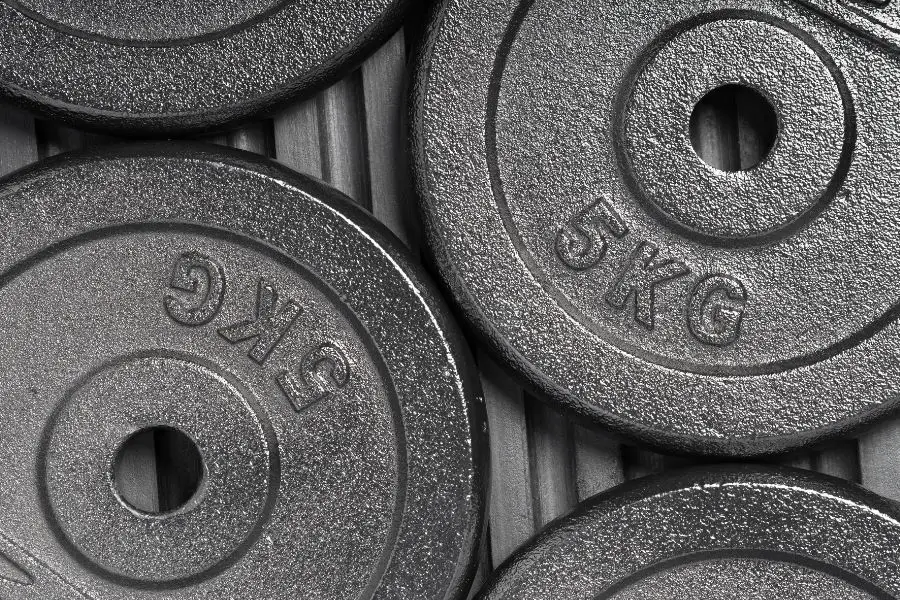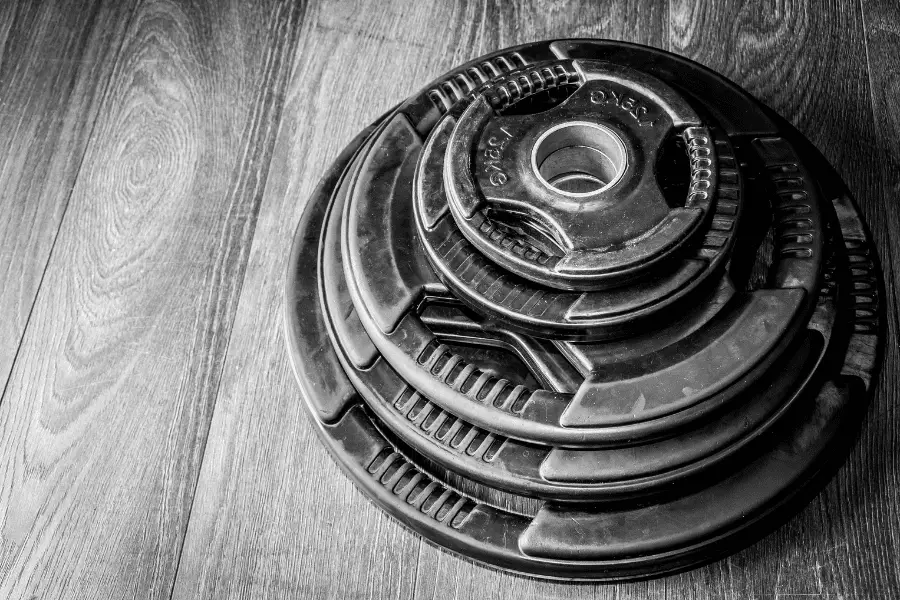Not all weight plates are created equal and while they all have the same goal; adding weight to a barbell, they can have different purposes, pros, and cons. Cast iron weight plates can come with or without a coating. What are the exact differences and why should you care?
Rubber or urethane-coated weight plates have the same cast iron core as bare steel plates. The soft coating reduces wear, noise, and damage to the floor and the plates. Bare iron plates are cheaper and have that classic look.
That’s a very quick rundown of the differences and there are some more benefits of each type. We’ll compare them in depth below and figure out which type is best for you.
Contents
Key Takeaways
| Type of Weight Plate | Rubber/Urethane Coated | Bare Cast Iron | |
| Core | Cast Iron | Cast Iron | |
| Coating | Rubber or Urethane | Paint | |
| Noise | Relatively quiet | Noisy | |
| Floor protection | Coating provides some impact protection | None | |
| Comfort | More comfortable to handle | Less comfortable to handle | |
| Aesthetics | Modern | Classic | |
| Price | More expensive | Cheaper | |
| Durability | Great although coating can wear | Great if not used on hard surface |
Bare Cast Iron Weight Plates

Bare cast iron weight plates are the classic, no-nonsense option. They are made of solid cast iron and have a simple, hard. Usually there will be a coat of paint but nothing soft like rubber. These plates have been a staple in gyms for decades due to their durability and straightforward design.
Advantages of Bare Cast Iron Plates:
Drawbacks:
Notice that floor protection and chipping can easily be mitigated by using good gym flooring. Gym flooring will also reduce the noise when the bar is set down on the floor but doesn’t do anything for plates banging against each other.
Bare cast iron weight plates are a great budget choice for home and garage gyms. They work well and are durable with some care. It’s highly recommended to use them with a proper gym floor to reduce noise and protect both the floor and plate.
Coated Weight Plates

Coated weight plates come in various forms, with rubber and urethane coatings being the most common. These coatings are applied to the iron core of the plate to provide additional benefits and protection. So on the inside, these plates are very similar to the bare cast iron plates. It’s the layer on the outside that makes the difference.
Advantages of Coated Weight Plates:
Potential Drawbacks:
So there are some significant benefits to using coated plates. If you can afford it, it’s well worth the extra cost. Both the protection and noise reduction aspects are a big deal. You’d be surprised how quickly that banging noise gets old. And if not for you then for the people around you.
Rubber coated plates are worth it if they fit your budget. The extra protection, noise damping and comfort are worth the extra money over bare steel plates.
Factors to Consider When Choosing
Budget: Your budget will play a significant role in your decision. Coated weight plates, while offering several benefits, come at a higher price point than bare cast iron plates. While coated plates are worth it for the benefits, it does have to fit into your budget.
Noise: Coated plates are a lot quieter. Both when banging against each other and when putting the plates on the floor. It’s a big difference that is important to many people. Yes, gym flooring will dampen noise when putting the plates down but not during lifting when plates can bang against each other.
Floor Protection: If noise and floor protection are essential to you, coated plates are likely the better option. Consider the type of flooring you have in your gym or workout space. If you have hard flooring, a coating is very useful since metal on a hard floor can easily damage both the floor and the plate.
Type of Coating: If you’ve decided you need coated plates, there is another decision to make: Rubber or urethane?. While the differences between those two types aren’t nearly as big as between coated or uncoated, it’s something you be aware of. You can find an article comparing the two here.
Aesthetics: This is very personal. Coated plates look more sleek and modern while bare plates look more classic. If you have a preference one way or the other, see if the drawbacks of your choice are worth the looks.
Need some more help picking weight plates? Here’s a guide that walks you through all the choices you have to make. Or just click here to find my recommended weight plates for home gyms.
Conclusion
There is no one-size-fits-all answer in the bare cast iron vs. coated weight plates showdown. Your choice will ultimately depend on your individual preferences, needs, and budget.
Bare cast iron is the cheapest and they can still last for decades if you treat them right. However, if you’ve got the money, the extra protection, reduced noise and durability of coated plates is worth it.
Looks and feel are also factors you can take into account. That’s a very personal thing though. Some people like the sleek modern look while others like the classic bare steel look and feel.

